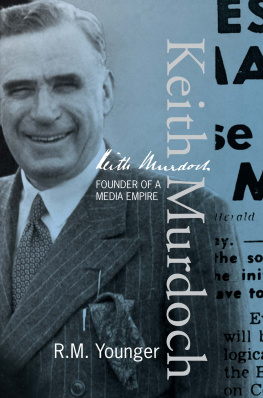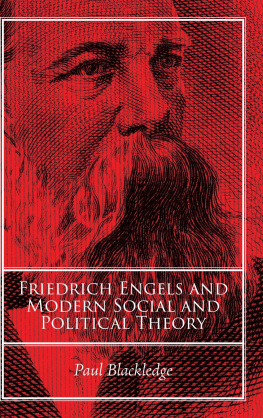Published by The History Press
Charleston, SC
www.historypress.com
Copyright 2021 by Carol Lomicky
All rights reserved
E-Book year 2021
First published 2021
ISBN 978.1.4396.7354.6
Library of Congress Control Number: 2020948439
Print Edition ISBN 978.1.4671.4804.7
Notice: The information in this book is true and complete to the best of our knowledge. It is offered without guarantee on the part of the author or The History Press. The author and The History Press disclaim all liability in connection with the use of this book.
All rights reserved. No part of this book may be reproduced or transmitted in any form whatsoever without prior written permission from the publisher except in the case of brief quotations embodied in critical articles and reviews.
For Mary Ann.
ACKNOWLEDGEMENTS
Long before I became involved in this project, Keith Blackledges friend and colleague Chuck Salestrom fell victim to one of Keiths lunch invitations, and together they began video recording interviews with North Platte community leaders and others connected to the editors work and life. As their relationship deepened, Chuck realized that there was a story that needed to be told. Thank you, Chuck, for bringing me into this project.
Lucky for me, Keith kept everythingnewspaper articles, his editorials and columns, background information, personal papers and correspondencesome kept in tall filing cabinets at the North Platte Public Library and others in boxes and files at the Lincoln County Historical Museum. Thanks to the library staffparticularly Kaycee Anderson, who for several years tolerated my presence in the conference room as I read, organized and indexed the materials.
The fun part was conducting the interviewsmost face to face, some on the phone, others via e-mail and still others through old-fashioned letter writing. I am deeply indebted to Keiths wife, Mary Ann, who spent hours with me and provided me access to family mementos, scrapbooks and photographs. Invaluable also were the conversations with Keiths sons, his colleagues, his friends and the people who worked with him at the Telegraph.
Thanks go to the Mid-Nebraska Community Foundation for the grant that helped fund my research; Rhonda Seacrest and Sharron Hollen for their generosity; George Hipple, photographer extraordinaire; and digital wizard Jessica Epting. Others whose moral support cannot be overstated include families, especially the spouses Tom Lomicky and Kristi Salestrom; the folks at the North Platte Telegraph, who patiently answered questions and retrieved stuff; the many friends and colleagues whose interest and encouragement really kept the project moving forward; and the team at The History Press, especially Chad Rhoad and Ryan Finn. I appreciate each and every one of you.
PROLOGUE
It has been my goal to edit a newspaper that would seem like a friend to the people who bought it. In that, as in all these other things, it is not always possible to succeed. Much of the news is unpleasant. I havent been able to do anything about that.
Keith Blackledge
The editor, imposing despite his small stature, stood by his office door and gazed out at the newsroom of the North Platte Telegraph. It was just before noon on Wednesday, October, 22, 1975. Reporters clacked away on typewriters; another ripped wire service stories coming over the teletype machine; and a few, using rubber cement and a brush, glued pages of their typewritten stories together. Back in the composing areajust within eyeshot of the editortypeset galleys ran through the wax machine. It wouldnt be long before the tedious paste-up process would beginplacing each story, headline and pre-scanned photo on the page as specified on the dummy sheets. It was all hustle and bustle to meet the early-afternoon deadline for the days press run. Meanwhile, every news staffer was fully aware of the presence of Keith Blackledge, the editor they both respected and feared. To which part of the daily routine would be his focus this time, they wondered. Was he looking to make sure no one was idle as phones rang, as reporters and photographers perused film strip negatives, as the copy editor returned stories to reporters for rewrites or fact checks? It was difficult to tell, for the slanting rays of sun bathing the newsroom in filtered light obscured the editors piercing brown eyes, already partially concealed behind his owl-like spectacles.
As Blackledge continued to stand by his office door, the mostly young staffers knew that it wouldnt be long before the editor would begin a slow stroll through the newsroom. Years later, Dan Moser, former Telegraph reporter/editor, remembered this not infrequent occurrence:
Keith would just stand at the door of his office; everyone was aware of it when he was there. Hed just stand there looking outno one was sure who he was looking at. Then he would start sharking. He would roam around the newsroomnot talking, just roaming.
And so, on this particular late morning in the fall of 1975, Blackledge began to shark as his news team cast furtive eyes toward one another while hunkering down over desktops and typewriters, some in exaggerated busyness. In those days, newsrooms were without partitioned workspaces, making it more difficult for them to hide.
As Blackledge strolled through the newsroom, he registered almost automatically what appeared to be utter chaos as reporters, editors, photographers, darkroom technicians and page make-up designers prepared yet another daily edition for press time. There sat Bill Eddy, the assistant editor, phone tucked under his chin, rapidly typing an obituary on a call from one of the Adam and Swanson Funeral Home directors. His and Hollens antics can distract, although, Blackledge admitted to himself, theyre in good fun and often amusing.
As Blackledge meandered the newsroom that day, he was deep in thought. The last few nights had been late, beginning on Saturday, when Eddy had shown up at his house to alert the editor, whod already turned in for the night, about those gruesome murders over in Sutherland and the panic it was causing in North Platte because it was rumored a gunman was on the loose. Eddys doing a good job, Blackledge mused. Hed put together the news team to begin gathering information that very night. Thankfully, the suspect, after hiding in a field all night, had been apprehended early Sunday morning. Mondays front-page stories and photos of the crime and arraignment of Erwin Charles Simants, the accused, indicated how much significant time and space the paper likely would be devoting to the coverage. Tuesday night was also a late one while first awaiting the election returns and then celebrating the voters approval of a hard-fought school bond issue. Add to this the ominous threat to local media created during a closed-door session in the courtroom last night, when the Lincoln County judge considered issuing a gag order on the press before Simantss preliminary hearing. Blackledge questioned the sense it made to allow journalists into the hearing while also prohibiting them from reporting any details of the crime. The newspaper certainly could be facing a challenging set of circumstances, Blackledge thought, but the staff, though young, is capable. No doubt the newspapers own editorial cartoonist, local mail carrier Carl Bieber, would find the impending dilemma fodder for a cartoon or two.













